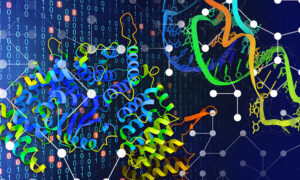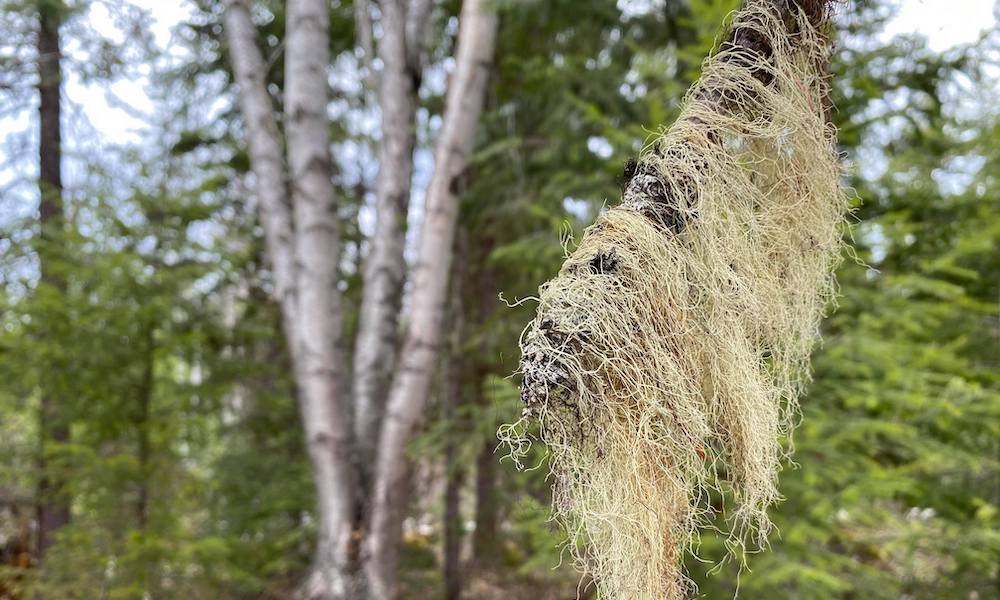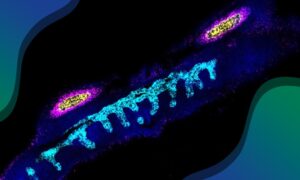
Using metagenomic techniques to explore lichens
Researchers have used a metagenomics approach to piece together the genomes of yeasts found in wild lichens

Researchers from EMBL’s European Bioinformatics Institute (EMBL-EBI), the University of Alberta in Canada, and colleagues have used metagenome analysis to identify yeasts – single-cell fungi – found at low abundance within a lichen symbiosis. Their findings suggest that these yeasts might play a role in helping the lichens survive.
Lichens are unusual organisms. They don’t have roots, stems, or leaves, and each type of lichen is a partnership, or symbiosis, between at least two species, usually a fungus – such as a yeast – and an alga. Lichens are essential parts of ecosystems because they help cycle nutrients and provide a home to insects and nesting material for birds. Many lichens are very sensitive to pollution and are of concern to conservationists in industrialised countries.
Exploring lichen composition is now easier than ever, thanks to modern sequencing technologies and genome analysis tools. This study uses a metagenomics technique to produce genome assemblies for previously unobtainable, low-abundance fungi – the Basidiomycete yeasts – found within many wild lichens. Further investigation into the yeast genomes has also helped the researchers to shed light on the important role yeasts play in aiding the survival of lichens in their natural habitat.
Identifying low-abundance genomes
Basidiomycete yeasts have recently been reported as part of many lichen symbioses, but attempts to confirm this using genome sequencing have proven tricky. This is because of the small quantities of these yeasts identified in lichens, and also because they can’t be cultured in a lab. To solve this problem, the researchers used a metagenomics approach to isolate the genomes of the Basidiomycete yeasts.
“This study provides a framework for starting to understand the genomics of some of these more complicated biological organisms that form elaborate symbiotic relationships,” says Rob Finn, Team Leader of Microbiome Informatics at EMBL-EBI. “Using metagenomics can help us investigate complex communities, such as lichens, and also ecosystems like soil and ocean water.”
Once the researchers had acquired what they believed to be the yeast genomes, they used EukCC – a tool developed at EMBL-EBI for estimating how well eukaryotic genomes have been reconstructed from metagenomic samples – to confirm with confidence that Basidiomycete yeasts were present in their lichen samples. The yeast genomes obtained from this study are now openly accessible through EMBL-EBI’s European Nucleotide Archive.
“This study shows that we can determine eukaryotic microbes with confidence using the right tools,” says Paul Saary, PhD student at EMBL-EBI. “Our metagenomics approach enabled us to access novel genomes that would otherwise be impossible to put together.”
The “slurry” method
The researchers also developed a method for obtaining the lowly abundant yeast from their lichen samples, to give them enough to work with. This method – coined the “slurry” method – works by removing the polysaccharide cement that covers the lichen and makes it difficult to gain access to the yeast.
“To enrich a sample in yeast cells, I used a setup similar to a washing machine; I put the lichen in warm water and shook it for a few hours,” says Gulnara Tagirdzhanova, a PhD student at the University of Alberta. “The warm water dissolves the polysaccharides and the yeasts end up in a solution, which I spun down and used the resulting slurry to obtain the yeast we needed.”
Having access to these genomes has also given the researchers an insight into the role the yeast may play within the lichen symbiosis. Genetic evidence suggests that the yeast may be involved in both nutrient scavenging and secreting the polysaccharide that surrounds the lichen. These potential functions are currently being investigated experimentally.
“This study opens the door to accessing and interrogating different lichen systems from many different ecosystems in a way that wasn’t possible before,” says Toby Spribille, Assistant Professor at the University of Alberta. “It’s the innovation here that has paved the way for us to be able to study many other systems using these same methods.”
This post was originally published on EMBL-EBI News


